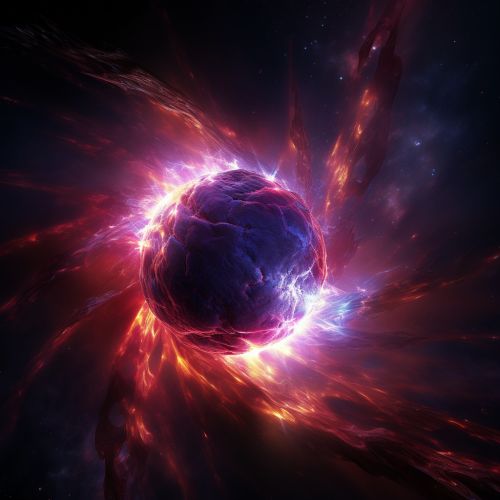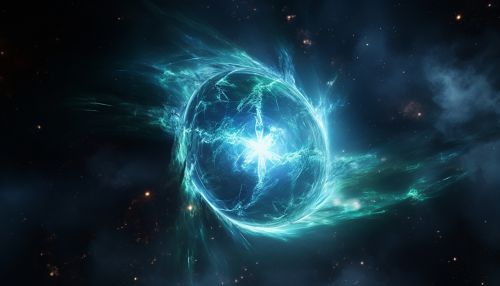Neutron Star
Introduction
A neutron star is a celestial object of extremely high density composed predominantly of closely packed neutrons. Neutron stars are the collapsed cores of some massive stars, created in the aftermath of supernova explosions. They are the smallest and densest stars known to exist in the universe.
Formation
Neutron stars are the end product of the life cycle of stars that were initially 10 to 29 times more massive than our sun. When these stars have exhausted the nuclear fuel in their cores, gravitational forces cause the core to collapse, triggering a supernova explosion. If the core of the collapsing star is between about 1 and 3 solar masses, these forces compress the core to the point that protons and electrons combine to form neutrons, hence creating a neutron star.
Structure
The structure of a neutron star is layered, similar to that of ordinary stars, but with much different "ingredients". The outer layer, the crust, is incredibly hard and rigid, composed of a lattice of ions and degenerate electrons. Beneath the crust, the outer core consists of a neutron superfluid with a small fraction of protons and electrons. The inner core composition is uncertain, but may consist of an exotic state of matter that includes pions and kaons.


Properties
Neutron stars are incredibly dense, with a mass of about 1.4 times that of the sun but a radius of only about 10 kilometers. This results in a density that is a billion times greater than the densest materials on Earth. They also have powerful magnetic fields, billions of times stronger than Earth's, and rotate extremely rapidly, with some spinning several hundred times per second.
Types of Neutron Stars
There are several types of neutron stars, classified based on their properties and the manner in which they emit energy. These include pulsars, which emit regular pulses of radiation, and magnetars, which have the strongest magnetic fields in the universe. There are also isolated neutron stars and binary neutron stars, which are part of a binary system with another star.
Observations
Observing neutron stars is challenging due to their small size and the fact that they emit most of their radiation in X-rays and gamma rays, which are not visible to the naked eye. However, they can be detected indirectly through their effects on their surroundings, such as their gravitational pull on companion stars in binary systems, or through the pulses of radiation emitted by pulsars.
Neutron Stars and General Relativity
Neutron stars are one of the few places in the universe where the effects of general relativity can be directly observed. The extreme density and gravity of neutron stars cause significant warping of spacetime, leading to phenomena such as gravitational time dilation and gravitational redshift.
Neutron Stars in Popular Culture
Neutron stars have been featured in various works of science fiction, often as a source of immense power or as a hazard to space travel. They have also been used as a setting for stories, with characters living on or visiting these extreme environments.
